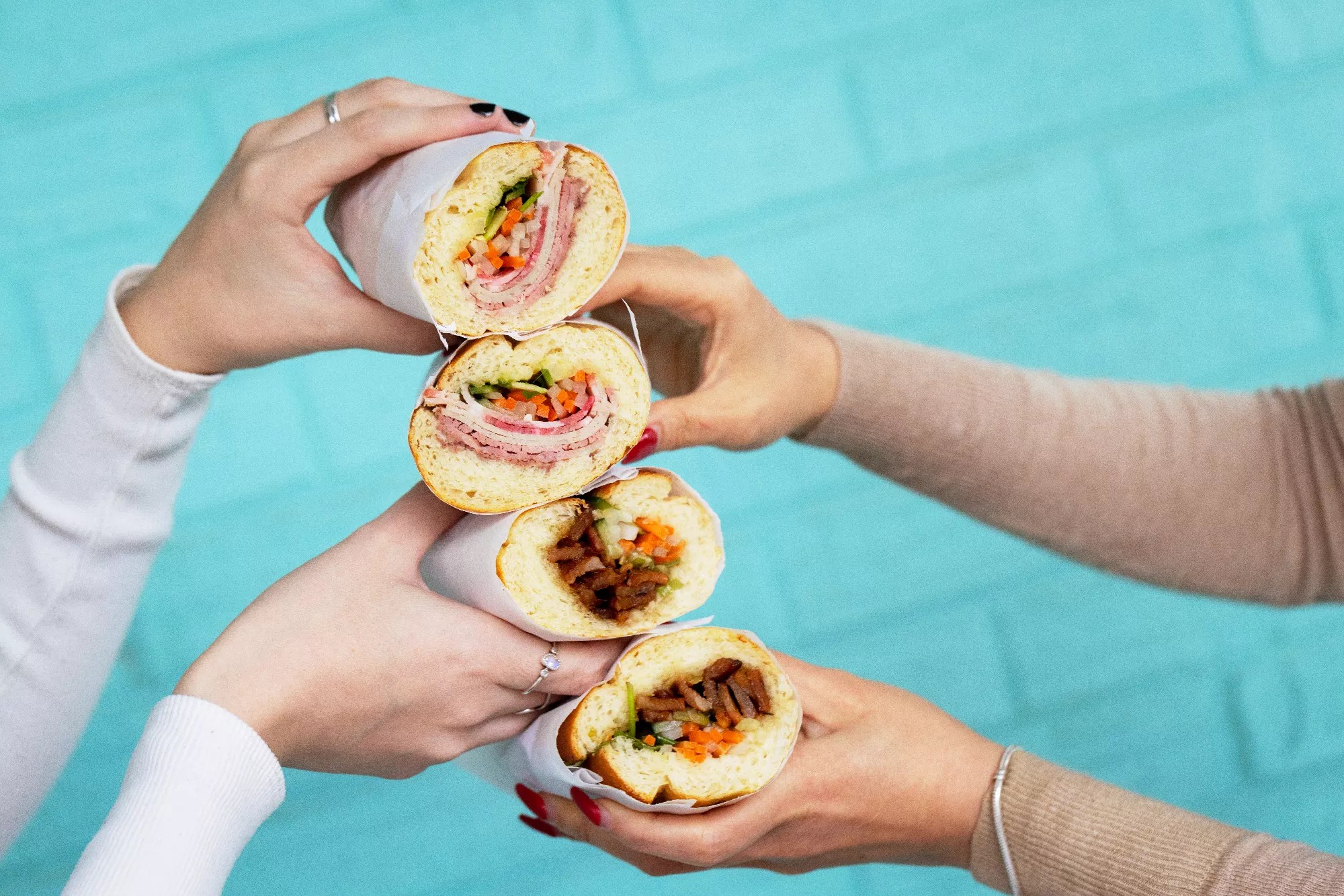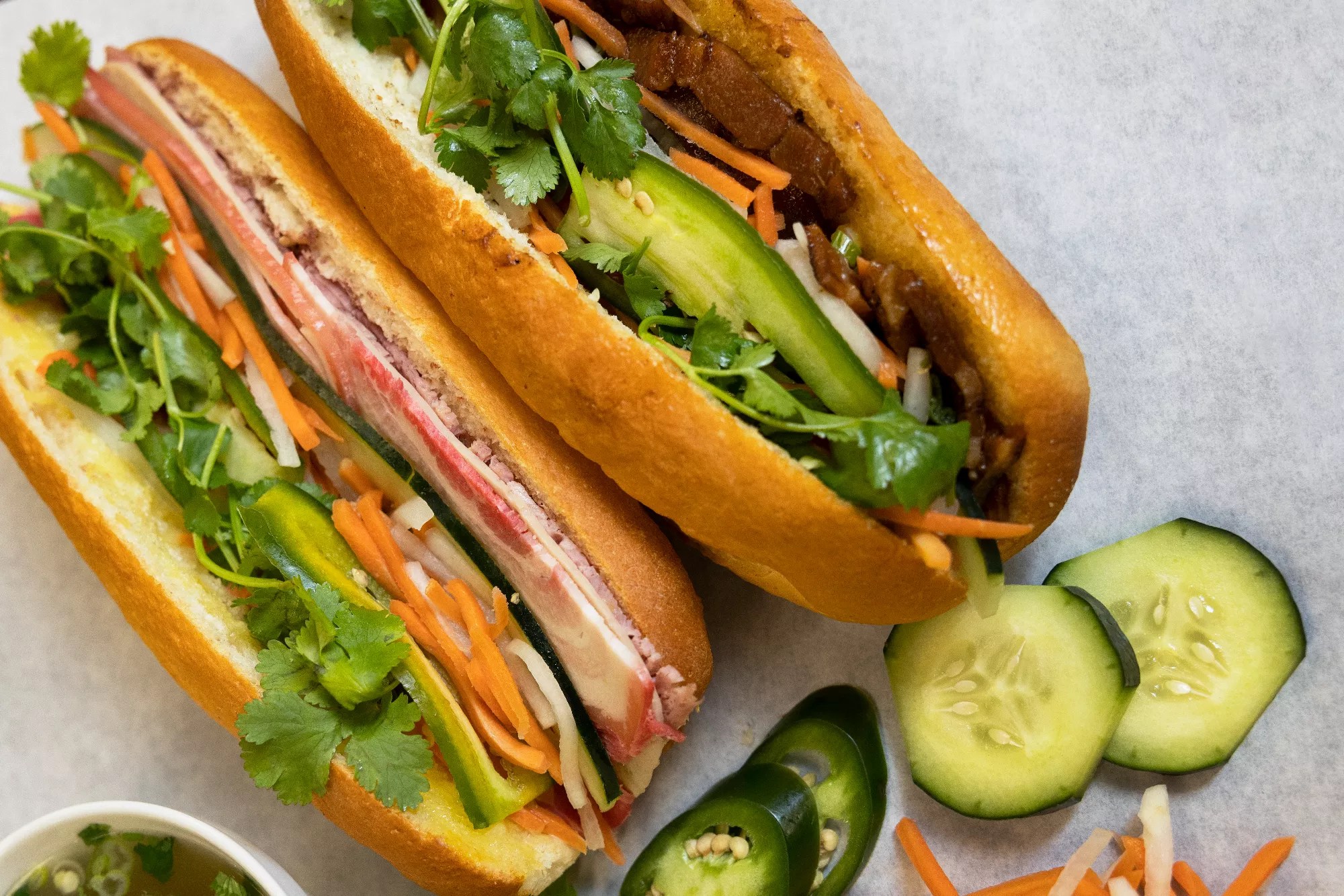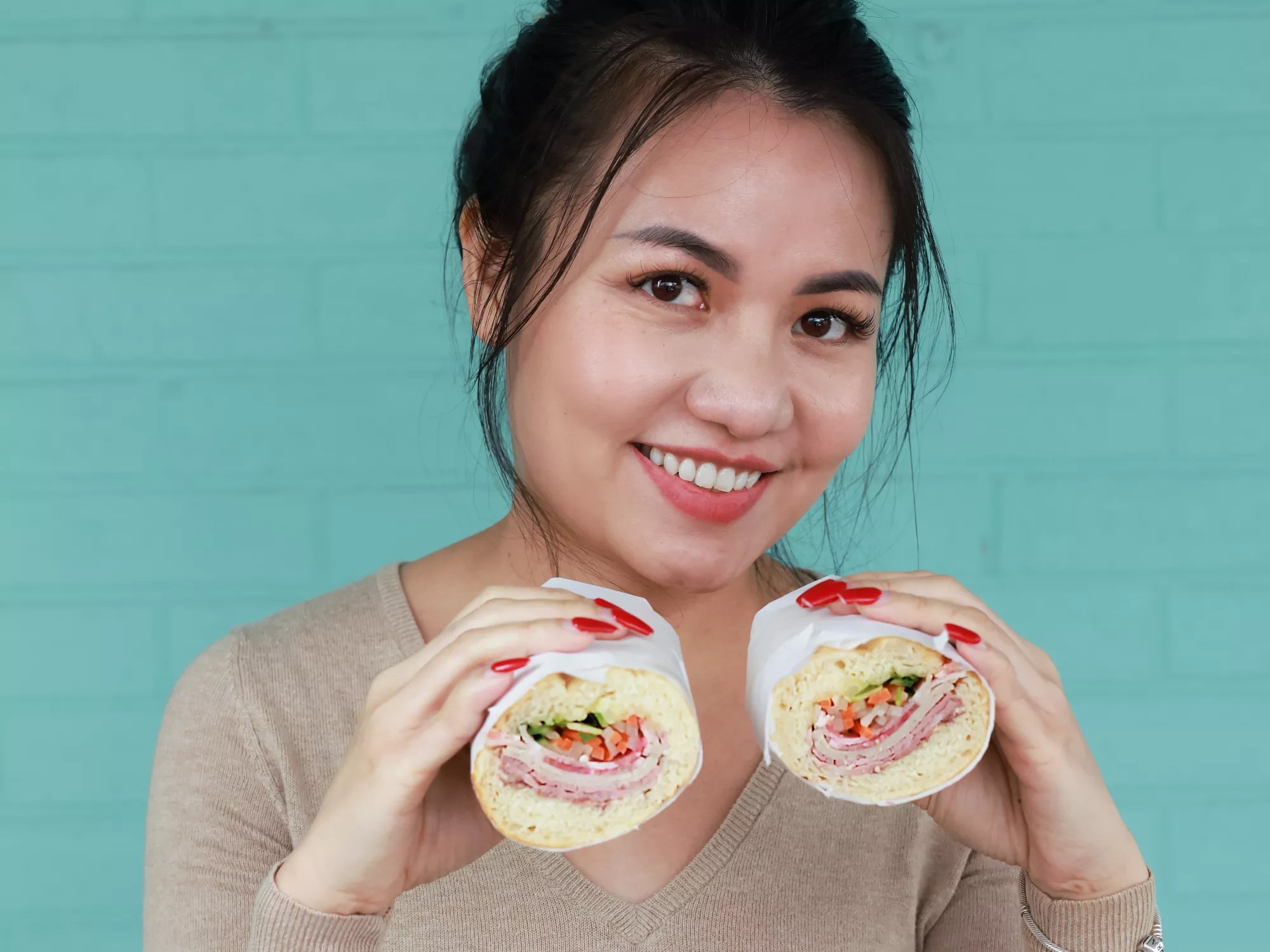
Valeria Moonch

Audio By Carbonatix
From longtime favorite Vinh Xuong, one of Westword‘s picks for the Top 100 Restaurants in the city, to global chains that have moved into the Mile High, like Lee’s Sandwiches, there are more bánh mì options in the metro area than ever before.
Recently, over the span of one week, I ate four combination bánh mì; a surprisingly satisfying spicy tomato-sardine bánh mì; lemongrass beef, pork and tofu (in separate sandwiches) bánh mì; a fried egg bánh mì that, at $7, felt like theft considering the current cost of eggs; and last – and certainly least – a turkey club bánh mì.
The experience left me feeling appreciative and utterly exhausted by Denver’s bánh mì scene.
What is bánh mì?
Denver, make your New Year’s Resolution Count!
We’re $17,500 away from our End-of-Year campaign goal, with just a five days left! We’re ready to deliver — but we need the resources to do it right. If Westword matters to you, please contribute today to help us expand our current events coverage when it’s needed most.
During the colonization of Vietnam from 1887 to 1954, the French used food to reinforce the colonial divide: “Bread and meat make us strong, rice and fish keep them weak.” Bánh mì as we know it today came about after the French’s decisive defeat at the Battle of Dien Bien Phu. The Vietnamese took the classic French ham-and-butter baguette sandwich and added rice flour to compensate for the humidity, replaced butter with cheaper mayo, kept the cold cuts and p’té; and added pickled vegetables.
In Vietnam, bánh mì became a ubiquitous, quick and cheap street food. So when Denver resettled roughly 10,000 Vietnamese refugees after the fall of Saigon in 1975, some of the first Vietnamese businesses that sprang up in what became Little Saigon along Federal Boulevard were bánh mì shops.

Two classic bánh mì favorites: pork and the combination with pâté.
Valeria Moonch
Denver’s bánh mì scene stalwarts
Denver’s oldest still-operating bánh mì shops include Ba Le, Vinh Xuong, Baker’s Palace and New Saigon Bakery. All four were started by first-generation Vietnamese families with a focus on tradition – Vinh Xuong even uses the same recipes the family followed at their shop in Vietnam. “We make our pickled carrots, mayo, p’té and all the cold cuts ourselves. Even the chile oil and pickled jalapenos you can add at the condiment bar are made in-house,” explains Duc Huynh, whose parents opened the original Vinh Xuong in the ’90s. It is now located in the Far East Center, while Duc operates the outpost on West Alameda Avenue that he opened in 2011.
Those first shops were founded by Vietnamese, for Vietnamese. “When we started, customers were barely trickling in and were mostly Vietnamese customers,” recalls Cecilia Ly, whose parents opened Baker’s Palace.
Thoa Nguyen ran New Saigon Bakery with her parents and now owns Bánh & Butter in Aurora. “There was the opportunity for my mom to just really push Vietnamese bánh mì with pork innards – intestines, the tongue, the ear, all of that,” she recalls. “The flavor was just so good with a hoisin base and Vietnamese people were like, ‘Oh, you can’t find this anywhere.”
But soon, “Vietnamese people would take bánh mì to work, especially at the post office because a lot of Vietnamese work at the post office, and share it among their American colleagues,” she continues. “And then people are just like, ‘What is this sandwich? It’s amazing!’ Then they hear about the price they’re just like, ‘Okay, what a steal!'”
Bánh mì is the perfect gateway for curious American eaters – familiar as a sandwich, yet different enough in texture and fillings to keep it exciting. Soon, non-Asian Denverites were queuing up at Ba Le, Vinh Xuong, Baker’s Palace and New Saigon Bakery, fueling the sandwich’s popularity – and with that came new interpretations and iterations.

Thuc-Nhu Hoang owns one of Denver’s newer bánh mì joints, CôNu’s Corner.
Valeria Moonch
Bánh, bánh mì or bun me?
The traditionalists will tell you that bánh mì is about the bread. It “should be crispy on the outside but soft on the inside, so it doesn’t hurt your mouth when you bite into it,” explains Thuc-Nhu Hoang, owner of CôNu’s Corner.
Adds Duc from Vinh Xuong: “Our bread [is] the cornerstone of our sandwiches, it’s baked fresh daily – around 1,000 loaves of French bread on a typical day.”
Notice that Duc doesn’t say French baguette; the traditional bánh mì bread is oval-shaped and uses rice flour to give it that crusty exterior and soft, light crumb. But some newer shops swap in French baguettes. “I have a lot of people who get really mad at my sandwiches. They’re like, ‘This is not traditional Vietnamese bread!'” says Bánh & Butter’s Thoa. “I’m an Asian fusion bakery for a reason, and it’s because I like a chewy French baguette-like sandwich. It’s not light and flaky like my parents’. Otherwise, I’d just opened up another New Saigon Bakery and Deli.”
“So the bread’s important, sure, but in the Vietnamese community, you need to have [mayo] and p’té for a good bánh mì,” explains Tuan Huynh, co-founder of Ca Phe, a new Vietnamese coffee and banh mi shop in Thornton that he opened with his wife and brother. “P’té is made of pork meat or pork liver and it’s just very rich and a little bit gamey. But if you use the canned version, it’s just stinky, it’s not rich. You need to make it fresh.”
When asked about the plethora of bánh mì options that have removed p’té due to American’s distaste for animal organs, Tuan laughs. “I mean it’s kind of funny,” he says. “They’re not eating a bánh mì.”
But Thoa makes a different argument: A bánh mì is defined by its taste profile. “Whatever’s on the outside or inside, are you sticking true to the heat, the acidity and the marination of the meat?” she asks.

The Lee’s Sandwiches on Alameda and Federal has a drive thru.
Molly Martin
For some, anything goes. At Lee’s Sandwiches, the bánh mì menu is split in half – on the right are “Asian Sandwiches” made on French baguettes; on the left are “European Sandwiches” with options such as BLT, roast beef and cheese, and veggie avocado. Even the prep station is neatly divided in half: The traditional Vietnamese cold cuts are in the bins on the right, American deli meats on the left. There are pickled shredded carrots and daikon across from the dill pickles, and yolk-based Vietnamese mayo opposite Miracle Whip.
When asked if he would call the Lee’s turkey club sandwich a bánh mì, Vu Nguyen, owner of the Denver franchise store, shrugs. “Yeah, I mean bánh mì is just bread. It just means bread,” he says.
“He is completely accurate,” responds Thoa. “I feel conflicted because being a Vietnamese person … a bánh mì is just a bánh mì. To us, it doesn’t feel as unique. To other people who don’t utilize [Vietnamese language], they’re like, ‘No, it’s called bánh mì because we’re utilizing the inspiration of the pickled daikons and the Asian flavors and the spice level and the balance.'”
Lee’s is a franchise founded in 1981 by a Vietnamese immigrant couple who deliberately expanded the menu to appeal to a broader audience. Today, Lee’s is credited with popularizing bánh mì and Vietnamese coffee among mainstream Americans and inspiring other Vietnamese-owned bakery chains.
The adoption of “bánh mi as anything” occurs in the other, slightly more uncomfortable direction as well. For example, Modern Market Eatery offers a chicken banh mi made with blackened chicken thigh, pickled carrots, cilantro, basil, jalapeno and lemongrass aioli on ciabatta. Almost apologetically, the product description includes the phrase, “While we do take a few liberties with the traditional version…”
Perhaps most cringeworthy is the BBQ Banh Mi from the Denver-headquartered chain Tokyo Joe’s. It’s made with barbecue chicken, avocado, Japanese cucumber salad, jalapenos, egg, lettuce, green onion and sriracha over rice. Yes, rice – no bread.

Nhu Tran, head chef and co-owner of Ca Phe in Thornton.
Ca Phe
The reclamation of the bánh mì
Over the past five years, a crop of Vietnamese entrepreneurs have opened new bánh mì shops. Some, like Banh Mi Zone on South Federal and Banh Mi Station near the University of Denver, are this generation’s iteration of the traditional, modest bánh mì shop.
Others, like CôNu’s Corner, upgrade the traditional with techniques of their own and premium ingredients – for which CôNu’s Corner charges a slightly higher price. “I remember having bánh mì everywhere in Vietnam, but it was so hard to find a good one in the U.S. – especially in Denver,” says Hoang. “We saw an opportunity to introduce a fresh take on this classic Vietnamese sandwich while staying true to its roots.”
The popularity of bánh mì has exploded, even in the suburbs. “So when we were thinking about putting the sign on our exterior we kept going back and forth on naming it bánh mì,” recounts Ca Phe’s Tuan. “But surprisingly, Americans are very educated on bánh mì. … A lot of them ask for extra p’té. I’m like, ‘What?! You know p’té?” And they say, ‘Yeah, yeah, we love p’té.'”
Ca Phe is an example of another type of Denver bánh mì shop – the California transplant. Its menu is inspired by the shops Tuan and his friends would visit in Orange County, where fusion is king. “We saw a pho bánh mì, so they take all the ingredients of the pho, like the beef brisket, the steak, cilantro, onion, put it on a bánh mì and you dip it into the pho broth kind of like a French dip,” he describes. “We felt like the pho, there’s not enough flavor, so we went with the spicy version of pho called bún bò huế on a bánh mì.”
At Auora’s Golden Banh Mi, which is owned by the same family that runs Golden Saigon next door, you’ll find fusion options such as Steak & Kimcheese, katsu chicken and curry chicken.
Even the stalwarts have tried their hand at experimenting. At Vinh Xuong, “We’ve made a pho-rench dip bánh mì, a ceviche-inspired bánh mì, and even a smoked barbecue beef bánh mì – just to explore how far the bánh mì can go,” recounts Duc. However, you’ll mostly find the old favorites on offer. “After years in the business, though, we’ve realized that sticking with what we know and can consistently execute is what keeps us grounded and keeps our customers coming back.”

Banh Mi Station opened in 2021, bringing Denver the fried chicken version of this Vietnamese staple.
Molly Martin
What’s coming next?
My predictions: California trends will continue to influence new bánh mì shop owners in Denver. At least one location of California fusion chains such as Bun Mee or Banh Mi Boys will move into the local market (Lee’s and Paris are already here).
With a low barrier for entry, growing demand and the decline of boba tea shops, younger Asian entrepreneurs will gravitate to bánh mì, each trying to outdo the other with bold fusion flavors and unexpected ingredients. We may even see the birth of a fast-casual chain – Chipotle, but make it bánh mì.
An upscale bánh mì spot is only a matter of time, too. “I’ve already seen it on menus at American restaurants that are a little bit more upscale so it’s already on that route, but I’m excited to see a Vietnamese person really take it to that next level,” says Thoa.
Tuan has three words to offer: “$100 bánh mì!”
Bánh mì has always been a sandwich in motion. What started as a collision of cultures shaped by circumstance has never stopped evolving – crossing borders, changing hands, shifting with taste and time.
In Denver, bánh mì is both fiercely traditional and endlessly reinvented, found in no-frills shops on Federal, fusion cafés and high-end kitchens alike. Some stay true to their roots, others push the boundaries. But in the end – it’s still one damn good sandwich.